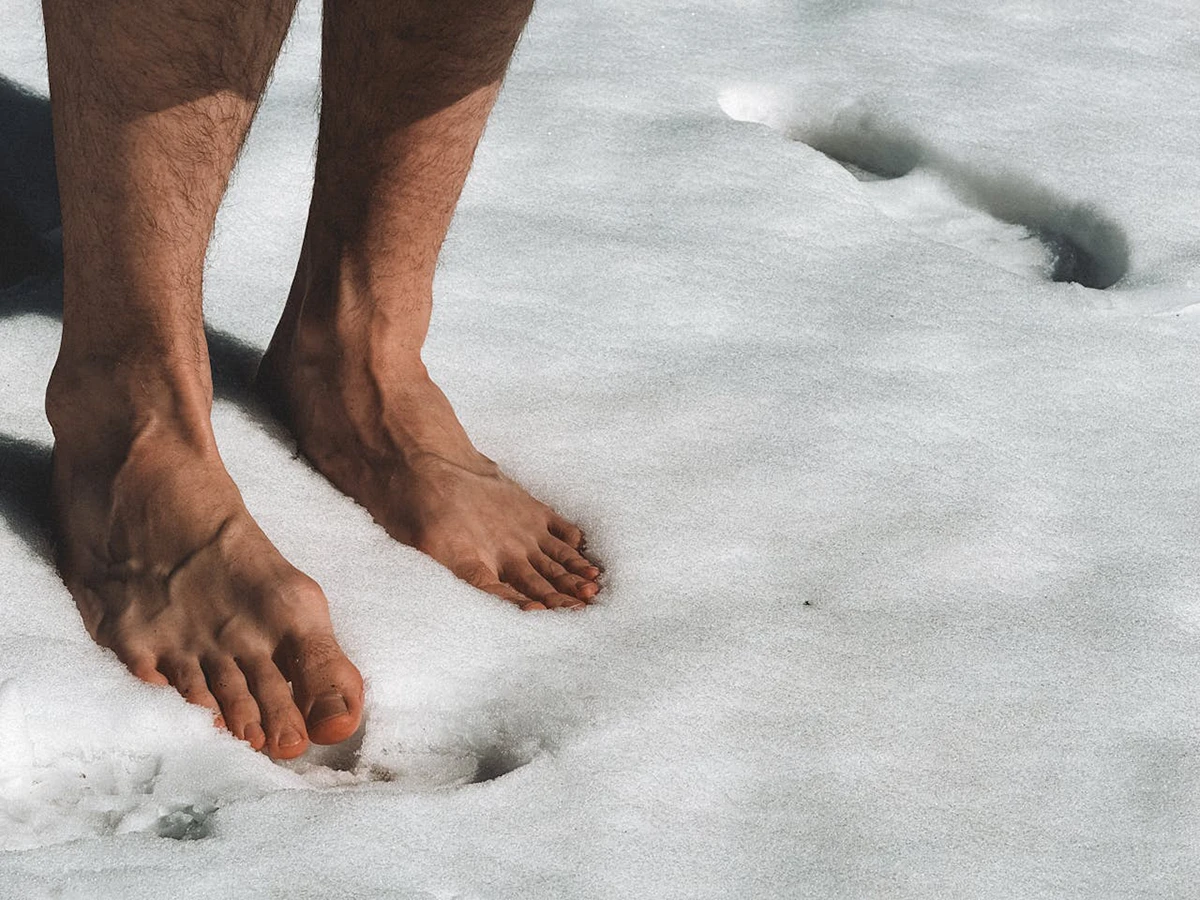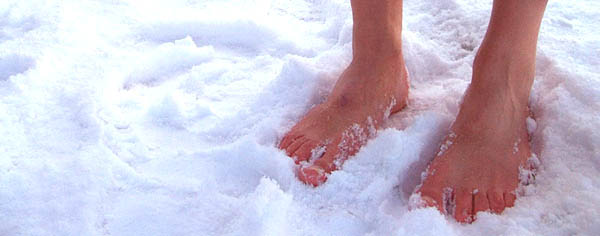With winter’s cold bite comes a range of foot and ankle issues, most commonly diagnosed by Podiatrists are Chilblains and Raynaud’s.
Chilblains tend to flare up during colder weather, causing reduction in blood flow, discomfort, and skin irritation such as itching and swelling.
On the other hand Raynaud’s results in numbness, tingling or extremely cold feet. Raynaud’s disease is a systemic condition meaning it is often unpreventable, while chilblains are a physical response to cold. While chilblains can often be prevented with proper care and protection from the cold.
What Is the Difference Between Chilblains and Raynaud’s?
Chilblains are localised, painful, itchy lesions that form when the skin is exposed to cold, wet conditions and then warm up too quickly. The sudden change in temperature causes blood vessels to constrict, and when they reopen, they can leak fluid into the surrounding tissue. This leads to redness, swelling, and sometimes blisters.
Risk factors for chilblains include:
- Family history
- Raynaud’s phenomenon
- Circulatory issues and
- Lifestyle factors like smoking or prolonged inactivity
- People who originate from warmer climates and have moved to an area with a colder climate
- People with autoimmune diseases or blood disorders may also be at higher risk
If symptoms are recurrent or very painful, a thorough medical evaluation can help diagnose the condition, often through a physical examination and sometimes blood tests to rule out underlying causes.
Raynaud’s syndrome, on the other hand, is a systemic condition where smaller blood vessels, usually in the fingers and toes, constrict in response to cold or stress, limiting blood flow to those areas. This can cause the toes to feel cold and numb, change colour (usually from white or blue to red), and sometimes cause pain when the blood flow returns.
Both conditions are marked by a few common symptoms:
- Extreme temperatures in the toes (either feeling burning hot or freezing cold)
- Numbness, itching, pain, and
- Noticeable colour changes
When circulation is disrupted, you may notice your toes turning from a fiery red to a bruised, almost purple or blue colour.
If you’re experiencing any of these symptoms, it’s important to get checked out, as they can worsen, resulting in ulceration without proper care. There are simple measures to help manage the symptoms, like staying warm, wearing moisture-wicking socks, and using enclosed footwear. In some cases, a Podiatrist may recommend treatments like topical medication application, paraffin wax baths or lifestyle changes to improve circulation.
So, if you feel your feet are always cold or experience any of these changes, don’t hesitate to visit the clinic. It’s better to catch it early and prevent complications!

The Role of Blood Vessels, Blood Flow & Circulation
Understanding the importance of blood vessels, blood flow and circulation is essential when addressing Raynaud’s and Chilblains. Both conditions involve restricted blood flow to extremities, leading to discomfort, swelling, and skin damage after exposure to cold or emotional stress.
Do Chilblains Mean I Have Poor Circulation?
Chilblains may indicate issues with blood circulation, especially when cold exposure leads to restricted blood flow. While not always linked to poor circulation, they can be a sign of compromised blood vessel walls or conditions like Raynaud’s phenomenon. Recurrent episodes may suggest underlying circulation problems.
How Do You Prevent & Manage Chilblains?
Preventing chilblains involves taking steps to avoid cold exposure and improving blood circulation, which is crucial for both chilblains and Raynaud’s disease. Since these conditions often occur together, the treatments overlap.
- Avoid Cold Exposure: Protect your skin from extreme cold by dressing warmly and wearing insulated gloves, socks, and shoes. It’s important to cover exposed areas, particularly on hands and feet.
- Keep Warm: Ensure your home is warm, and use heating pads or electric blankets if necessary. Avoid sudden temperature changes, as rapid warming of cold extremities can trigger chilblains.
- Improve Circulation: Regular physical activity promotes blood flow, which can help prevent both chilblains and Raynaud’s attacks. Avoid sitting or standing still for long periods, as it may restrict blood flow.
- Avoid Damp Clothing & Shoes: Wet or damp clothes can exacerbate chilblains. Ensure shoes and socks are dry and insulated to protect your feet.
- Topical Treatments & Medications: In more severe cases, your doctor may recommend topical creams to reduce inflammation or medications like calcium channel blockers, which help dilate blood vessels and improve circulation.
- Lifestyle Modifications: Quitting smoking is essential, as nicotine constricts blood vessels, worsening circulation problems. Eating a balanced diet and staying hydrated also support vascular health.
Focusing on warmth, circulation, and protection from cold can significantly reduce the risk of developing chilblains and effectively manage existing symptoms.

Getting On Top Of The Problem – How Your Podiatrist Can Help!
It’s crucial to address the cause and treatment of Raynaud’s and chilblains as soon as possible to prevent them from worsening. The earlier you manage them, the better the long-term outcome! Untreated symptoms, like fluid-filled bumps or painful swelling, can lead to potential complications.
By coming in to see us, we can help you manage these conditions with tailored treatments and expert advice. Our podiatrists will assess your symptoms, help improve circulation, and provide strategies to protect your exposed skin from cold temperatures. We’ll guide you on how to keep your feet warm and dry, advise on appropriate footwear to prevent damp shoes, and offer tips to improve overall circulation.
If needed, we can explore more advanced treatment options to reduce inflammation, ease discomfort, and prevent further complications. Don’t wait for the pain to get worse – schedule an appointment today, and we’ll help you take control of your condition and get you back on your feet.
Until next time, have fun and keep on walking!

